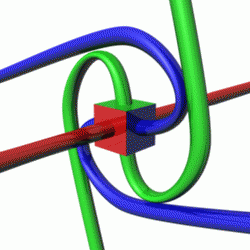
Report from Time Scout Virgil
Wednesday, August 5, 2015
Monday, January 5, 2015
Emergency preparations
For electric power outages longer than half an hour, or so, It is possible and even practical to have a generator to provide power for the necessary appliances. Freezer, refrigerator, electric control for a gas furnace, some lights, and even tv and radio are fairly low power.
Look at the name plate of all of these you want to be able to maintain functional through a power outage of perhaps a few days. Add up the number of Watts they use. That gives you a rough starting point to shop for generators. I have a 3000 Watt generator that is more than enough for me.
This one is just a small and cheap one to show how inexpensive it can be. http://www.lowes.com/pd_473285-48270-APG3014_0__...
The simplest way to hook one up to the house wiring is not legal so have an electrician install a switch and instruct you on how to turn some circuit breakers off to reduce the load. The labor will be the biggest expense. Here is an example of the low end switches.
http://www.lowes.com/pd_394441-48019-TF151W_0__...
Gasoline is still the least expensive and easiest to store for emergency backup. Once you have your generator and can hook it up, the only limit to how long you can run it is the amount of gas you have on hand. A few 5 gallon cans of gas can be handy to have around for many things.
You are already thinking along these lines so i hope you proceed with it. Emergency preparedness is a good thing. The exact nature of an emergency is impossible to predict, by definition. But the basic needs are almost always the same. Shelter, water, food and fuel.
Wednesday, November 12, 2014
Thursday, March 13, 2014
Radiation is Freightening
The possible proliferation of nuclear weapons is not really related to the fission nuclear power plants, except as a red herring employed by the fear mongering crowd. The same is true of the potential nuclear fallout from the detonation of nuclear weapons or "accidents" at fission nuclear power plants. The lack of danger from nuclear fallout has been demonstrated by the many above ground weapons tests half a century ago and the worst case scenario at a nuclear power plant already happened at Chernobyl - lots of very nasty fallout from inside the core of a running reactor spread of Europe, yet no related increase of cancers in 3 decades. It turns out that exposure to low level ionizing radiation is not a significant cause of cancer. We have learned that almost everything can contribute to causing cancer, but it requires several events.
The prolific estimates of thousands or more of cancer deaths have been proven false.
Monday, December 30, 2013
Recursion
Recursion
Recursion is a fundamental property of reality. The laws of physics operate on the present instant to produce the next. Although the progress of time from one instant to the next for us seem seems to be continuous but is not. There is some minimum time interval, probably near the Planck time.
The resolution of the Ultraviolet catastrophe was to assume that there is a finite minimum frequency. Without that assumption, the energy would become infinite as the wavelength decreases to zero. Length, time, and energy all had to have some minimum quantity, called quanta. The size of the minimums just had to be finite - not zero. The size turns out to be some 35 orders of magnitude smaller than our familiar world.
Some very simple recursive systems display complicated, even unpredictable behavior. Conway's Game of Life is an example well worth the time to investigate. If you want a deep dive into the concepts, I recommend a book, A New Kind of Science by Stephen Wolfram.
Thursday, December 26, 2013
Tuesday, December 3, 2013
Nuclear Proliferation
The US never had a monopoly on the knowledge of how to make nuclear bombs. At least two of the people who worked on the Manhattan project thought that it was too important for not only one nation to have this knowledge. They found ways to communicate it to Russia, which was an ally at the time. When FDR told Stalin that we had nuclear bombs Stalin did not ask any questions. I think that was because he was afraid he reveal that he already knew as much as FDR. Non-proliferation efforts were doomed even before the first test. Then with Ike's"Atoms for Peace" program and France's entry into the nuclear "club" the race was on. FDR's decision to not share the results from the Manhattan project with Russia or even England was a mistake that undermined the trust we could have had internationally. I agree that nuclear weapons, themselves, are not the problem. The attitudes of regimes are the problem. We need to face the fact that we are part of the problem. Now, how to fix this?
Subscribe to:
Comments (Atom)